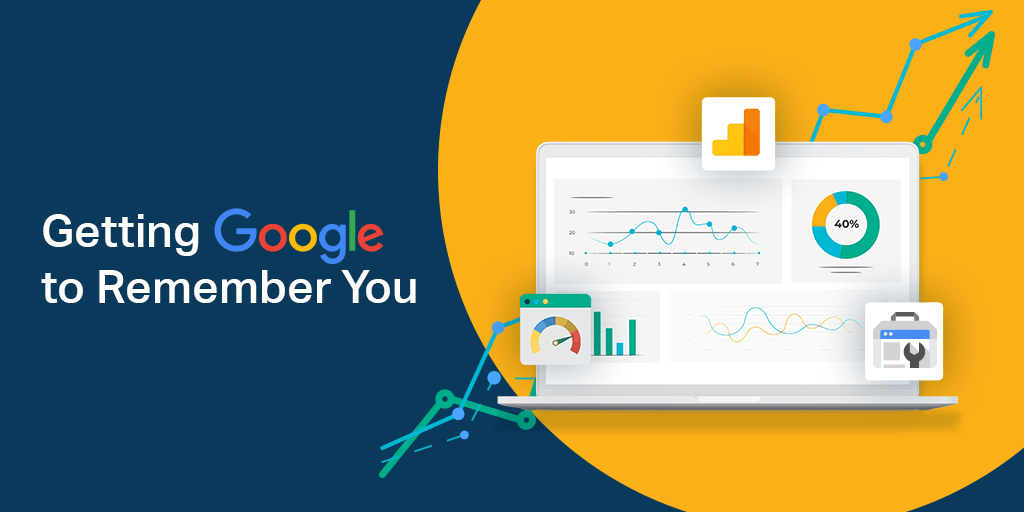Getting Google to Remember You
Well we have officially– and unfortunately– reached our fifth and final blog to conclude the “4 Pillars of SEO” series.
Oh, wait. You didn’t know this blog was part of a super informative, incredibly easy yet entertaining blog series all about the most important aspects of SEO? One that is carefully crafted so that you don’t have to scour the internet for hours trying to figure out what the heck SEO is, why you need it and how to utilize it for your business website’s own advantage?
Well boy, oh boy, do I have some fantastic news for you! In this five-part series we go into a major deepdive on all things SEO, specifically the four hallmark pillars of SEO and what we deem as the most important aspects to know.
Previously we have given an overview of the four pillars, as well as three deep dives consisting of: website structure, website content and backlinks and listings.
Today’s topic? Technology. Or what we like to call, getting Google to remember you.
Let’s get started.
What Do You Mean Technology?
Great question!
Technology is a broad umbrella term that essentially has to deal with all of the technological aspects of your website that need to be updated and watched.
As we said in our previous overview article, these are seemingly minor items that add up to be extremely important to keep track of. Some of these include (warning the following list is technical and you may need to wind up your propeller hat!): the speed of your website, the kind of sitemap you submit to Google Search Console (more on this later), the availability of structured data, mobile friendliness, and an HTTPS secure certificate, to name a few.
Some of these, such as website backups and security, need to happen regularly. You want to ensure your plugins and server are up-to-date to help protect your site from vulnerabilities that viruses or hackers can take advantage of. Additionally, you should consistently be monitoring page rank for keywords that are important to you. If you are ranking for your keywords, great, keep doing what you’re doing. If you aren’t, make some adjustments: incorporate more content utilizing the keywords you want to rank for on your website (read our blog all about website content for more!). This will help build your organic SEO and ranking on SERPs; and the higher you rank organically, the less you pay for advertising!
Now I know this sounds like a lot of information and things to keep track of, but one of the most helpful (and FREE) tools you should be using that can aid in this SEO pillar is Google Analytics.
Google Analytics
Google Analytics is one of the best tools to utilize to discover what users do on your site. It’s a website tracking tool that allows you to understand how your customers interact across your website and will help tell you and Google why you should be remembered.
While we could make an entirely different deep-dive series regarding Google Analytics, I want to point out the most important information you can find here and what it will tell you about your site’s structure.
I’m sure nearly everyone here has heard of Google Analytics, or even installed it on their site (if you haven’t…do it now). Now looking at all of the information that it gives you can be overwhelming, but in terms of your site’s structure, a few critical results to look at are your site’s engagement rate and average engagement time.
Engagement rate is a percentage of engaged sessions. A few examples of engaged sessions include the number of sessions that lasted longer than 60 seconds, had a conversion event, or had at least two page views or screen views. In general, high engagement rate = good, low engagement rate = bad.
This is important to look at because if a user isn’t intrigued enough by your site to engage, it could mean that you have some work to put in on your site. There are of course instances where maybe you’re truly not offering what they were looking for, but that’s not always the case.
When it comes to average session duration, it’s exactly what it sounds like– how long a user spends on your site. This encapsulates how long a user actively spends time on any of the pages of your site. A general rule of thumb is that optimal average engagement time is between 2-4 minutes– meaning higher = good and lower = not so good.
Another very important section to be familiar with is the Audience tab in your Google Analytics. Here, you’ll be able to find out key information on who is visiting your site and when. Taking into account your campaign efforts, this is extremely crucial to track how well those campaigns drive traffic to your sites; this way you’ll be able to make the appropriate adjustments.
Under the Audience tab, there are metrics for users and sessions– the two you should really pay attention to. Users refers to the amount of people visiting your website within a given time period while sessions is the number of times users interacted with your site. For example, if your metrics state you had 100 users and 500 sessions, on average, it appears as though most users visited your site 5 times (within the given time period).
While every metric in Google Analytics is important in their own way, these are a few that we deem would be extra helpful to get familiar with. But the best part of Google analytics is learning and adjusting your site, so don’t be afraid to jump in there and learn as much as you can!
Google Search Console
If Google Analytics is the tool to learn about what people do on your site, Google Search Console is the tool to learn about what Google thinks of your site and how Google is reading your website.
Google is forgetful and if Google Search Console reports errors or shows that your site is slow, it means that from Google’s perspective, your site is not worth remembering.
The goal of all your SEO efforts are to rank better, so that you get more traffic, and ultimately get you more business. If you want to rank better you need to know how Google feels about your website, and all that information my friend, can be found in Google Search Console.
The 3 areas we are going to touch on are Search Results, Sitemaps, and Core Web Vitals.
The Search Results section is helpful to see what queries (searches) Google remembers you for when recommending your website – you can also get a breakdown of what position your website ranks for for each query.
Sitemaps is where you provide Google the exact URL to the sitemap of your website. Google loves a sitemap; it allows Google to see a list of all your pages, posts, products and images and when they were last changed. If you want to fight against Google’s amnesia, make it easy for Google to learn about your site.
Finally the Core Web Vitals section is a report on your website both from a mobile and desktop perspective on your website speed. If your site is slow, Google is not impressed and will forget you as fast as last year’s top one hit wonder. These two reports allow you to see if speed issues are site-wide or limited to a specific page. From there use Google’s Page Speed Insights to take corrective action.
Google Search Central Blog
If you’ve never heard of Google’s Search Central Blog, don’t be alarmed but prepared to be amazed.
Google is constantly changing and updating their algorithm– sometimes even more than once per day! Now while that may sound a bit alarming, they are also constantly updating their users through their blog to keep you as informed as possible.
In this blog, Google will release multiple updates throughout the year that primarily relate to organic search results and SEO. However, not all updates are created equally – some updates are more substantial while others are more incremental in nature.
Keeping Up with the Joneses
Now as we mentioned in our 4 Pillars of SEO blog, another very important aspect of the Technology Pillar is actually keeping up with the ever-evolving world that is digital marketing. Much like everything in the technology industry, if you don’t evolve, you’ll fall behind. This includes utilizing newer modalities, image formats, and security features to show Google you’re still there and should be remembered.
Right now, voice search is at the fore-front of this. Being able to be recognized as a business by Siri, Alexa and Google Assistant is extremely important. While this is no easy task to be accomplished, it can be done. In order to do so you want to be verified on as many local listings as possible. In fact, verified listings have just as much of an impact on your SEO as Technology does– so much that we made it its own pillar as well!
Takeaway
And just like that, we’ve made it to the final conclusion of this series.
Overall, I hope that this article and series as a whole has inspired you to keep learning about digital marketing and SEO. This industry might seem intimidating– well, for good reason– but that doesn’t have to be your experience with it.
The best way to combat that is to be as educated as you can! Set aside some time each week to read up on Google’s updates, to learn a new aspect of improving your site’s SEO or subscribing to a new podcast or newsletter. You want to be able to be noticed and liked by Google but also not forgotten!
If you have any questions or want to learn more about our SEO services, contact us on our website or give us a call at (805) 481-0118.





